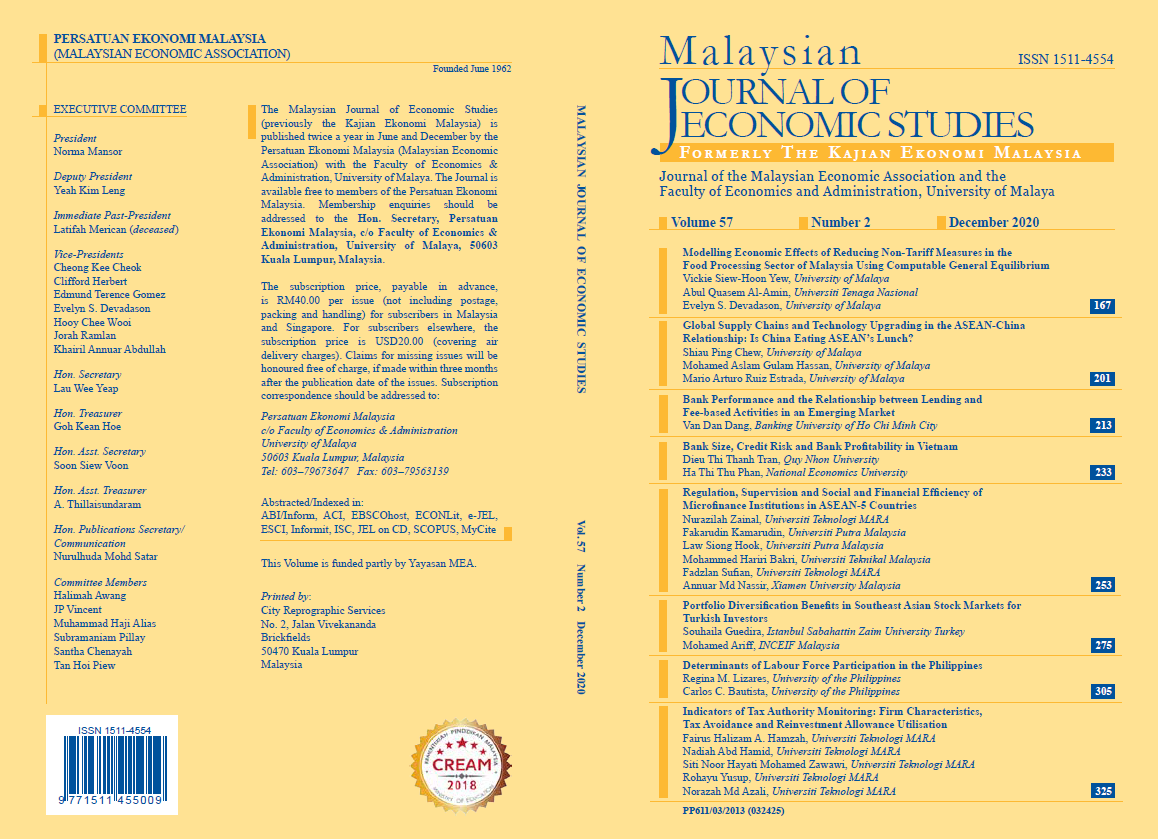Bank Performance and the Relationship between Lending and Fee-based Activities in an Emerging Market
DOI:
https://doi.org/10.22452/MJES.vol57no2.3Keywords:
Fee-based activities, lending, system of equations, trade-off, VietnamAbstract
New banking reforms in Vietnam highlight requirements for banks to diversify into the non-lending business lines. In this study, we analyse the reciprocal relationship between bank lending and fee-based activities and examine the comparative effects of two segments on bank performance in the Vietnamese market from 2007 to 2018. Employing the system of equations with the three-stage least squares (3SLS) estimator and different sets of variables, we find an inverse reciprocal relationship between bank lending ratio and fee-based income share and thereby contribute to the “loss leaders†hypothesis. For bank performance analyses, we apply a rich set of alternative measures for bank profitability, risk-adjusted profits and bank risk, estimated by the generalized method of moments (GMM) estimator for the dynamic panel framework. The results indicate benefits of economies of scope and differences in the risk-return mechanism of lending and fee-based activities. More precisely, we find fee income to positively affect returns on assets/equity and risk-adjusted profits. In sharp contrast, increased lending boosts net interest margins but contains more risks as shown by higher loss provision levels. The essential discrepancy between the two categories of activities has
created an interesting risk-return trade-off pattern.

